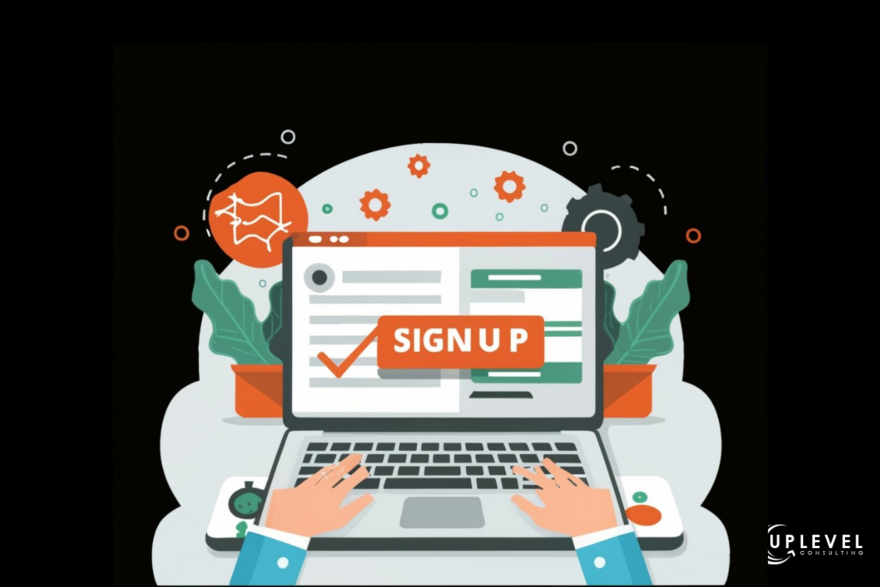Subscription-Based Business Models: Unlocking Success and Avoiding Pitfalls

From streaming services to meal kit deliveries, subscriptions have become a prevalent and effective strategy for building customer loyalty and recurring revenue streams.
You may have wondered, "how can I get in on the subscription-based business model for my business? What could I offer as a subscription?" I know I have wondered this from time-to-time.
So, this article explores what makes a subscription model successful and what are some mistakes often made by those who start them.
But first...
What are Subscription-Based Business Models?
A subscription-based business model is a strategy where customers pay a recurring fee at regular intervals to access a product or service. This model has gained popularity across various industries, offering businesses a predictable income while providing customers with convenience and continuous value.
Types of Subscription Models:
-
Product Subscriptions:
- Examples: Monthly subscription boxes, curated product deliveries.
- Examples: Monthly subscription boxes, curated product deliveries.
-
Service Subscriptions:
- Examples: Streaming services, cloud storage subscriptions, coaching services.
- Examples: Streaming services, cloud storage subscriptions, coaching services.
-
Membership Subscriptions:
- Examples: Premium memberships, loyalty programs for special offers or access.
- Examples: Premium memberships, loyalty programs for special offers or access.
-
Software as a Service (SaaS):
- Examples: Monthly software subscriptions, cloud-based tools such as course platforms.
- Examples: Monthly software subscriptions, cloud-based tools such as course platforms.
Steps to Start a Subscription-Based Marketing Model:
Starting a subscription-based model for a small business can be a strategic move to build recurring revenue and foster customer loyalty. Here's a step-by-step guide on how to start a subscription model:
-
Understand Your Audience:
- Identify your target audience and their needs. Talk to real people and ask a lot of questions. This is a valuable exercise you'll want to do on an ongoing basis. Tailor your subscription offering to provide value and address specific pain points. If you don't create value, there's no reason to pay so providing the value they need is paramount!
- Identify your target audience and their needs. Talk to real people and ask a lot of questions. This is a valuable exercise you'll want to do on an ongoing basis. Tailor your subscription offering to provide value and address specific pain points. If you don't create value, there's no reason to pay so providing the value they need is paramount!
-
Choose Your Subscription Type:
- Determine whether you'll offer product subscriptions, service subscriptions, membership subscriptions or a combination that fits your industry. Once again, it's all about what your clients actually need.
- Determine whether you'll offer product subscriptions, service subscriptions, membership subscriptions or a combination that fits your industry. Once again, it's all about what your clients actually need.
-
Define Your Value Proposition:
- Clearly communicate the benefits of subscribing. What makes your subscription unique? Why should customers choose it over one-time purchases?
- Clearly communicate the benefits of subscribing. What makes your subscription unique? Why should customers choose it over one-time purchases?
-
Create Tiers and Pricing Plans (optional):
- Develop different subscription tiers to cater to various customer preferences and budgets. Each tier may offer different features or levels of access. Tiered pricing plans may come after you've first created value for one level of services.
- Develop different subscription tiers to cater to various customer preferences and budgets. Each tier may offer different features or levels of access. Tiered pricing plans may come after you've first created value for one level of services.
-
Build a User-Friendly Platform:
- Invest in a user-friendly and secure online platform for subscription management. This could be your website or a dedicated subscription management platform.
- Invest in a user-friendly and secure online platform for subscription management. This could be your website or a dedicated subscription management platform.
-
Set Up Recurring Billing:
- Choose a payment gateway or subscription management tool to handle recurring billing. Ensure that it complies with security standards and regulations.
- Choose a payment gateway or subscription management tool to handle recurring billing. Ensure that it complies with security standards and regulations.
-
Offer a Free Trial or Introductory Promotion:
- Encourage sign-ups by providing a free trial or offering special promotions for the first month. This helps customers experience the value before committing.
- Encourage sign-ups by providing a free trial or offering special promotions for the first month. This helps customers experience the value before committing.
-
Create Compelling Content:
- Develop engaging content to keep subscribers interested. This may include regular updates, exclusive content or member-only perks. If you don't create member-only value, then what value is your subscription really offering. You'll have to continuously make it obvious there is a reason to pay for the subscription.
- Develop engaging content to keep subscribers interested. This may include regular updates, exclusive content or member-only perks. If you don't create member-only value, then what value is your subscription really offering. You'll have to continuously make it obvious there is a reason to pay for the subscription.
-
Provide Excellent Customer Support:
- Offer reliable customer support to address any issues or concerns promptly. Good customer service is crucial for subscriber retention.
Successful Examples of Subscription-Based Business Models
Sometimes inspiration comes for our own businesses when we look at those who have mastered the art of what we'd like to do. Here are a few of the most popular subscription-based business models that exist today. Maybe you are even a customer of some of them.
-
Netflix: (Streaming Media) Extensive content library (debatable, I know), original programming, global reach.
-
Amazon Prime: (E-commerce and Entertainment) Fast shipping, access to Prime Video, Prime Music, etc.
-
Spotify: (Music Streaming) Extensive music catalog, personalized playlists, podcast integration.
-
Adobe Creative Cloud: (Software as a Service/SaaS) Suite of professional creative tools, continuous updates, cloud-based collaboration.
-
Dollar Shave Club: (Personal Care, Subscription Box) Affordable razor subscriptions, humorous marketing, personalized product recommendations.
-
Blue Apron: (Meal Kit Delivery) Convenient meal solutions, fresh ingredients, easy-to-follow recipes.
-
Peloton: (Fitness and Technology) Connected fitness equipment, live and on-demand classes, community engagement.
Common Mistakes in Subscription-Based Marketing Models:
Maybe you've already formed a community of people willing to pay you for your services. The key to a successful subscription based business seems not to be in getting them but instead, in keeping them. Avoiding common mistakes will help you achieve that. Here are just a few things to avoid.
-
Don't Overlook Customer Feedback:
- If you don't listen and learn from your subscribers they won't stick around. Instead, regularly gather and analyze feedback to make necessary adjustments. To get feedback, you have to ask for it. Create multiple ways for subscribers to share it with you.
- If you don't listen and learn from your subscribers they won't stick around. Instead, regularly gather and analyze feedback to make necessary adjustments. To get feedback, you have to ask for it. Create multiple ways for subscribers to share it with you.
-
Inadequate Communication:
- Transparent communication about changes, updates or billing cycles is crucial. Failure to do so may result in subscriber frustration. And when they get annoyed with you, they drop you.
- Transparent communication about changes, updates or billing cycles is crucial. Failure to do so may result in subscriber frustration. And when they get annoyed with you, they drop you.
-
Lack of Personalization:
- Generic content and offerings may not resonate. Personalize experiences to ensure the know, like and trust factor. Getting personal means knowing and understanding your community. Be curious. Ask questions. Work to understand what life is like for your subscribers. Go deeper than the basics to keep them around longer.
- Generic content and offerings may not resonate. Personalize experiences to ensure the know, like and trust factor. Getting personal means knowing and understanding your community. Be curious. Ask questions. Work to understand what life is like for your subscribers. Go deeper than the basics to keep them around longer.
-
Don't Ignore Churn:
- When people leave your subscription service, it's an opportunity to learn and change. Have exit questionnaires or interviews. Ask uncomfortable questions to find out why they chose to leave. High subscriber churn rates might mean you won't be able to continue your subscription based model. So it's important to identify reasons for churn and implement strategies to retain customers.
When it comes to marketing your business, it's not always just about marketing campaigns. It's about talking to and managing a relationship with your current customers. How are you marketing to your current clients and customers? If you know that it's time to clearly identify and plan for your internal marketing strategy then don't hesitate to reach out for a strategy session. Click here and make contact today!

0 comments
Leave a comment
Please log in or register to post a comment